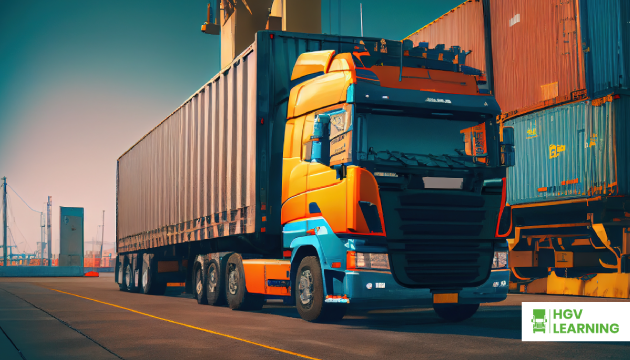Related Articles

28/10/2025
Preventing HGV Overloading: Legal Limits and On-the-Road Consequences

21/10/2025

Automation is one of the most talked-about developments in the transport industry. For heavy goods vehicles, it covers far more than just self-driving trucks. From advanced driver assistance systems to artificial intelligence route planning, the future of HGV driving is set to look very different over the next decade. This change brings both opportunities and challenges for drivers, employers, and the wider logistics sector.
In the context of HGVs, automation refers to technology that assists or partially replaces certain driving tasks. It is not the same as fully autonomous vehicles that operate without human input. Instead, most current systems are designed to support the driver, improve efficiency, and enhance safety.
Today, many modern HGVs already use automation in small but impactful ways:
These features are already making journeys safer and more efficient, paving the way for more advanced solutions in the years to come. For more on the technology shaping the industry, visit our How Technology Is Changing HGV article.
While full automation is still some way off, several pilot projects are taking place in the UK and Europe. Many focus on convoy-style operations where closely following HGVs are connected to improve fuel use and emissions. The UK has trialled platooning on motorways, with lead trucks wirelessly linked to followers to reduce drag and save fuel.
Major manufacturers are also introducing semi-automated features in new HGV models, including predictive gear-shifting and intelligent speed assistance. While these tools require a human in control, they mark important steps towards greater automation.
The UK has supported research into connected and autonomous freight vehicles, but legislation remains cautious. Safety is the priority, and strict rules limit where and how systems can operate. Factors such as weather, road works, and infrastructure readiness also affect adoption speed.
Beyond the UK, countries like the USA, Germany, and Australia are testing longer fully automated stretches on controlled routes. In the US, some states allow autonomous trucks on specific freight corridors, while Germany has invested in smart motorways equipped with vehicle-to-infrastructure communication systems.
These global developments matter for UK operators. International logistics companies may adopt similar technology standards, meaning British drivers and fleet managers will need to understand not just domestic but also international rules for automated freight.
Automated systems can react faster than humans in some situations, reducing the risk of accidents caused by fatigue or distraction. Lane-keeping assistance and collision avoidance can be particularly valuable for long-distance routes.
Automation can help reduce fuel consumption by smoothing driving patterns and minimising unnecessary braking or acceleration. This also lowers emissions, which is increasingly important as the sector moves towards greener operations.
Better route planning and predictive maintenance alerts can keep vehicles on the road longer with fewer unexpected breakdowns.
For practical steps to improve efficiency behind the wheel, visit our Eco Driving HGV Practical Tips article.
A common concern is that automation will replace human drivers. While some repetitive tasks may be automated, drivers will remain essential for the foreseeable future.
Even advanced systems are not foolproof. Weather conditions, roadworks, and complex traffic can challenge automation, so human oversight remains vital.
As HGVs become more connected, they are more exposed to digital threats. Protecting vehicle software and data will be as important as maintaining mechanical components.
For related guidance, visit our HGV Safety Tips: Essential Advice page.
Automation will not remove the need for skilled drivers. Instead, the role will evolve from purely operating the vehicle to managing and supervising automated systems.
Drivers may take on responsibilities such as:
This shift opens new paths in fleet supervision, compliance monitoring, and maintaining in-cab technology.
The best way to adapt is to upskill. This can include learning to operate telematics systems, understanding data compliance rules, and gaining additional qualifications that make you more versatile.
Here’s a practical checklist for drivers looking to future-proof their careers:
Training providers are introducing modules on advanced driver assistance and automated vehicle safety checks. Investing in these skills now helps you stay ahead in a competitive market. To explore next steps, visit our Unlock Opportunities With HGV Driver Training page.
In the next decade we may see wider use of semi-automated freight on major UK motorways, especially for long-distance haulage between ports and distribution hubs. International freight could benefit from more consistent standards across borders, making cross-border transport more efficient.
However, the human element will remain essential. Balancing innovation with driver welfare will be key to ensuring automation supports rather than replaces the skilled workforce.
The future of HGV driving will almost certainly involve more automation, but it does not mean the end of the professional driver. The role will evolve, combining hands-on vehicle operation with technology management and logistics oversight.
Drivers who embrace upskilling, stay informed about industry developments, and adapt to new working practices will be best placed to thrive. The future of HGV driving is full of opportunities for those ready to adapt, and the next decade will reward those who can work confidently alongside advanced technology.

28/10/2025

21/10/2025
Complete the form below and we’ll contact you asap.

